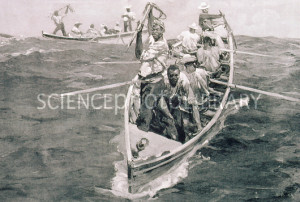by jcooper131 | Apr 3, 2016 | Houston Mediation and Arbitration
 The companies I consult with fall into one of two camps; they know they will have problems if they are not proactive, or they have a problem and it needs resolution now. I have far too few of the first, and more than I should of the second. Periodically I remind my readers that there is real peril in not resolving conflict in a timely manner. I have written before about the adverse impact on profits, on organizational cohesion, and the impact on quality and reliability of a product or service.
The companies I consult with fall into one of two camps; they know they will have problems if they are not proactive, or they have a problem and it needs resolution now. I have far too few of the first, and more than I should of the second. Periodically I remind my readers that there is real peril in not resolving conflict in a timely manner. I have written before about the adverse impact on profits, on organizational cohesion, and the impact on quality and reliability of a product or service.
Many studies over the past 25 years give ample empirical evidence of the damage resulting from conflicts that are ignored. So why do so many companies shy away from explicitly preventing conflict or confronting conflict once it begins to impact the organization. What is it about a company’s culture and the leadership that shapes that culture? Let’s face it folks; a conflict produces a lot of early warning signs, and it’s the leader’s job to heed those warnings and change whatever is producing those clear warnings. When they fail to act, to adjust, they are failing as leaders.
When I meet with a CEO or his key executives I ask each of them some simple questions.
Do you avoid talking about conflicts that inevitably appear?
How proactive are you in promoting procedures and processes for training managers and employees in conflict resolution?
How aware are your employees of the various techniques and tools available to them to prevent, mitigate, or resolve conflict?
The responses to these three questions varies greatly, and that is why I stay busy.
Want to learn more? Visit us at www.cdci-mediation.com, or call us at 843-452-8537.
by jcooper131 | Mar 22, 2016 | Houston Mediation and Arbitration
 Most conflicts in the workplace can be avoided. This is nothing new; you have probably heard that before. So why is it so difficult to prevent conflicts from erupting in the workplace damaging relationships, organizational cohesiveness, productivity, and so many other important facet of the organization? Regrettably, we are conditioned to take actions and make decisions that exacerbate the potential for conflict.
Most conflicts in the workplace can be avoided. This is nothing new; you have probably heard that before. So why is it so difficult to prevent conflicts from erupting in the workplace damaging relationships, organizational cohesiveness, productivity, and so many other important facet of the organization? Regrettably, we are conditioned to take actions and make decisions that exacerbate the potential for conflict.
No conflict lands on your desk fully formed “out of the blue”. While it may have caught you by surprise, it was building just beyond your horizon, and like a hurricane, it gave you a number of warnings that you either did not see, or did not interpret correctly. No conflict begins without someone or more than one ignoring the first building block of any conflict – a disagreement.
The disagreement is the easiest of the potential conflict hurdles to overcome. By definition it simply means that you face a lack of consensus. Today, in thousands of offices, the executive, the manager, the team leader is telling the group there is a new project, program, or major purchase. The teams form, and the initial strategies discussed. Before too many days pass disagreements will start to show up.
At this point no one is right and no one is wrong. A lack of consensus simply means different members of the team see the path to success differently. The first rule is do not defend your point of view. Begin by listening to the other members of the team, explain your point of view at the appropriate time, and discuss the differences. The disagreement stage is not the point in the process where one stakes out positions and begins to mount a defense. That is a recipe for failure.
Want to know more? Feel free to contact us at 832-452-8537, or 281-531-8133; or E-mail us at jerry_cooper@att.net.
by jcooper131 | Mar 7, 2016 | Houston Mediation and Arbitration

used by permission of Microsoft
I read an article on the power of the short sentence not long ago. The blog post caught my attention because the writer used the works of Ernest Hemingway to make her point. I have several of his books and re-read one or two of them each year, and I agree with the woman who wrote the article. It is his use of the short sentence that adds power and drama to his stories.
In keeping with that article’s theme, I will keep it pithy (to echo a certain television commentator). Conflict needs to be resolved by the parties that created the conflict in the first place. As a mediator, I make my living guiding parties in conflict through a briar patch of their own making, and the most successful mediations result from negotiations the parties take ownership from the start. In mediations where the parties have the most positive outcomes are those where, once I have set the stage, the parties find the outcome they need.
Many years ago I read a book about whale hunting in the 19th century. In the book there is a scene where the whales have been spotted, and the boats lowered into the water. As the boat crews are rowing toward the whales, the bo’sun is giving instructions to a rookie sailor. He looked the rookie in the eye and told him that once the whaleboats were in the water, the most important job was not steering the boat, but keeping it from capsizing.
I always find that a useful mental image to take into a mediation. Want to know more? Visit us a www.cdci-mediation.com.
 The companies I consult with fall into one of two camps; they know they will have problems if they are not proactive, or they have a problem and it needs resolution now. I have far too few of the first, and more than I should of the second. Periodically I remind my readers that there is real peril in not resolving conflict in a timely manner. I have written before about the adverse impact on profits, on organizational cohesion, and the impact on quality and reliability of a product or service.
The companies I consult with fall into one of two camps; they know they will have problems if they are not proactive, or they have a problem and it needs resolution now. I have far too few of the first, and more than I should of the second. Periodically I remind my readers that there is real peril in not resolving conflict in a timely manner. I have written before about the adverse impact on profits, on organizational cohesion, and the impact on quality and reliability of a product or service.

